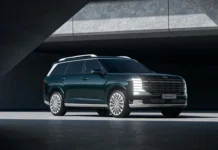
After pedestrian accidents, the California DMV suspended Cruise’s ability to operate driverless cars in the state.
On Tuesday, the state temporarily pulled the autonomous testing permits for General Motors subsidiary Cruise LLC. In a statement, the Department of Motor Vehicles said the robotaxis posed “an unreasonable risk to public safety,” after multiple reports of pedestrian injuries, including an incident earlier this month that prompted an investigation by the National Highway Traffic Safety Administration (NHTSA).
The DMV noted it can “immediately suspend or revoke permits” in the event of such safety concerns. Specifically, it cited four regulations under which it did suspend Cruise’s ability to operate its robotaxi fleet without human monitors behind the wheel. In its statement, the California DMV said it “determines the manufacter’s vehicles are not safe for the public’s operation”, and that “the manufacturer has misrepresented any infomration related to safety of the autonomous technology of its vehicles.”
Today’s decision does not impact Cruise’s permit to test vehicles with a safety driver present — only cars that operated entirely without human intervention.

After California’s Public Utilities Commission approved Cruise’s round-the-clock robotaxi service more than two months ago, one of the company’s cars crashed into an emergency vehicle. Several cars also caused a traffic jam in San Francisco, which at the time prompted the DMV to request Cruise reduce its active autonomous fleet by 50%, while it conducted an investigation.
Cruise published a statement Tuesday on the pedestrian crash, saying safety “is at the core of everything we do”, and laying out more details on the incident in question. It did not, however, address the DMV’s suspension of its autonomous permits.























